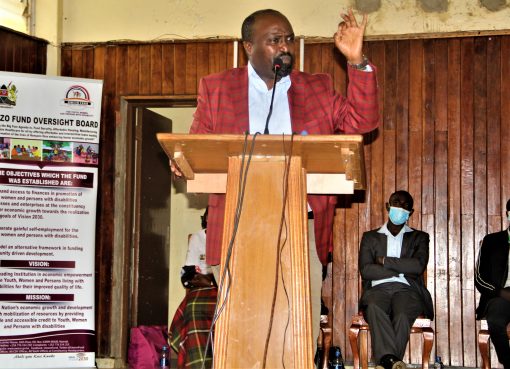At least 70,000 residents of Nakuru County are in need of relief food due to effects of drought with the government assuring that no one will die of hunger.
County Commissioner Gilbert Kitiyo further expressed the government’s commitment to find solutions to drought through investments in drought preparedness and early warning programmes and that the State was undertaking humanitarian interventions to avert calamities as witnessed in previous droughts.
Kitiyo stated that he had already convened the County Steering Committee meeting jointly with Governor Susan Kihika that came up with an action plan aimed at ensuring that only deserving cases across the 11 Sub-Counties would benefit from relief food that was flagged off at State House, Nairobi by President William Ruto to famine-stricken families and livestock in various parts of the country.
President Ruto has said 3.5 million people in 23 counties were severely affected by food shortage, lack of water and animal feeds.
Kitiyo indicated that several wards in all the Sub-Counties experiencing severe drought had been mapped out and the findings forwarded to relevant authorities.
While directing chiefs to activate food donation committees, the County Commissioner said new guidelines and formulas would be used in identifying deserving cases and working out a distinct relief food donation package for every individual family so that the beneficiaries get what they only need.
“As the President directed, the relief food from both the national government and development partners will not be distributed by the County commissioners only as has been the case before. It will be a joint effort that will involve various stakeholders including the donors to ensure transparency,” he added.
Kitiyo who made the remarks during a tour of Naivasha and Gilgil Sub-Counties indicated that the Kenya Meat Commission has been given the necessary resources to undertake livestock offtake to reduce risks of livestock deaths due to drought.
While urging residents to sell their livestock to reduce more deaths, the County Commissioner said animal feeds would also be distributed to farmers in affected parts of the devolved unit to mitigate the effects of the prevailing drought.
The administrator underscored the need to reduce high reliance on rain-fed agriculture. He said the government is keen on expanding irrigation schemes and reviving stalled ones towards scaling up food security and enhancing value addition.
During the tour, Kitiyo held a series of meetings with Deputy County Commissioners, Assistant County Commissioners, Departmental heads, Chiefs and Assistant Chiefs.
Kitiyo noted that due to effects of climate change, most parts of the country were experiencing unreliable rainfall and erratic weather patterns with farmers often running into huge losses when their crops failed.
The administrator added that although the soil in most parts of the county is fertile, dependence on the rain-fed farming system has precluded agriculture as an alternative food source.
“The State is emphasizing on expansion and intensification of agriculture through irrigation, with a focus on crop diversification, poverty alleviation, food security and improved quality of life for the rural population. This is an initiative that will impact positively on farmers who will now have sufficient water to irrigate their crops and make the most out of it in revenues,” he observed.
Kitiyo stated that there was need to invest in community-based resilience and drought preparedness programmes to avert situations where Kenyans in some parts of the country experience acute food shortages.
Farmers are contending with poor rainfall patterns that affected last year’s agricultural production, seeing the sector that supports about a third of Kenya’s GDP contract by 0.1 per cent, its lowest performance since 2017, the Kenya National Bureau of Statistics (KNBS) stated in the 2022 Economic Survey.
KNBS reported that last year, maize production dropped by 12.8 per cent to 36.7 million bags, recording the crop’s lowest performance since 2017. As a result, this year, the cost of Kenya’s staple, ugali, has jumped by 100 per cent, with maize flour price hitting highs of Sh240 last month.
The administrator asked the county government to make provision in its budgets so as to complement the national governments in provision of relief food, water trucking and a livestock offtake programme.
The World Food Programme projected that counties including Lamu, Kilifi, Taita Taveta, Tana River, Turkana, Samburu, West Pokot, Baringo, Kajiado, Narok, Laikipia, Nyeri, Embu, Meru, Isiolo, Wajir, Garissa and Mandera could slide into catastrophic food insecurity due to failed rains.
By Anne Mwale




